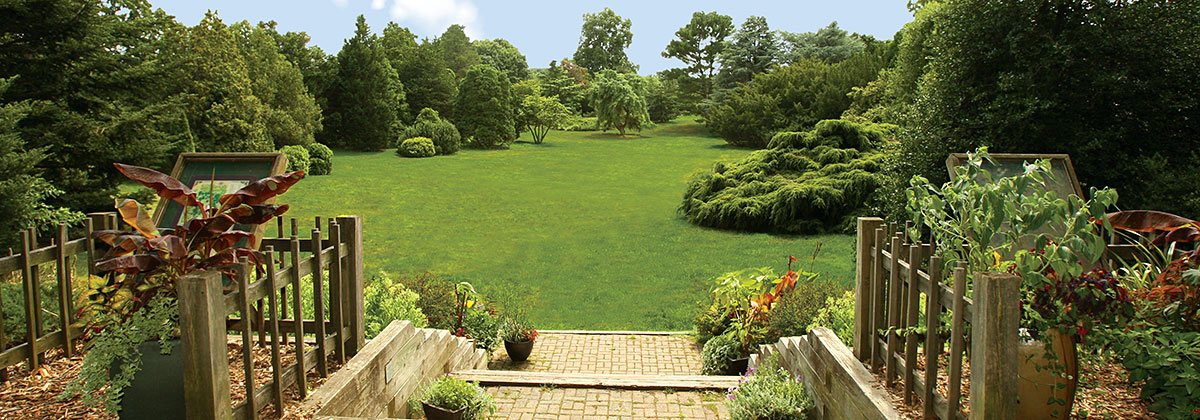

Officially named the Roy H. DeBoer Evergreen Garden in October 1997, this garden was designed and planted by DeBoer from 1958–60. The plants are grouped by genus around the great sunken lawn, which was at one time used as a “borrowing pit” where soil was mined for alternate uses. DeBoer designed it as an outdoor room with a large Weeping White Pine (Pinus strobus ‘Pendula’) serving as the focal point. The plant material was donated by various nurseries throughout the state. Other highlights of the Evergreen Garden include wonderful examples of Sargent’s Weeping Hemlock (Tsuga Canadensis ‘Sargentii’) and a host of cedars, pines, spruces, and firs. The gorgeous central lawn is now a popular site for visitors to relax, picnic, and throw Frisbee. It serves as the setting for many events, including our annual Summer Solstice Jazz and Wine event, as well as a favorite venue for wedding ceremonies.
DeBoer arrived at Rutgers University in 1955, to pursue a master’s degree in Horticulture, after earning an undergraduate degree from Cornell University in Ornamental Horticulture/Landscape Architecture. He spent much of his time at the “Rutgers Display Gardens,” while also working to establish a new undergraduate Landscape Design program. (DeBoer is considered the founder of the undergraduate Landscape Architecture program at Rutgers, which was nationally accredited in 1970, and served as its department chair for the first 20 years.) He served several years during the late 1950s as coordinator of the “Display Gardens” and was part of a number of major pruning and renewal projects in the American Holly collection, the shrub garden, and the Rhododendron garden. He was responsible for the planting of the Taxus (yew) collection, and played a role in the creation of the hedge demonstration, and the shade tree collection. More significantly, he designed and planted the Evergreen Garden during the late 1950s. DeBoer served as president of the New Jersey chapter of the American Society of Landscape Architects in 1977–78. During his lifetime, he received many recognitions and awards that attest to the quality and effectiveness of his teaching. He continued to be actively involved with the Gardens in an advisory capacity and worked with Landscape Architecture students in Blake Hall until his passing on March 17, 2014.


